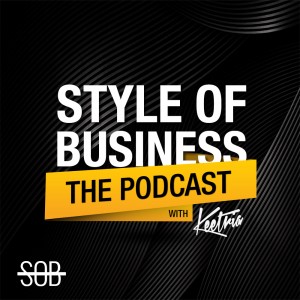Before you lay down any solid ground work for your business, you have to come up with a brand. Why is this such a quintessential step? Because your brand is your business’ soul. It’s the personality that separates it from the rest of the crowd. Without a discernable, unique, vivid brand, your business is an empty husk.
However, creating a brand from scratch is a tricky task. No one ever said branding was easy, but it is rewarding…still, it’s only fulfilling if you know how to do it the right way. Otherwise you’ll have a lot of balled up scratch paper sitting haphazardly around you office trash can, covered in half-baked ideas that don’t go anywhere.
Like all artforms, branding comes from an idea — an inspiration. In order to cultivate that inspiration, you have to ask yourself these three important branding questions. If you don’t know the answers, you don’t have anything close to a workable brand.
Question 1: Why do you want to create this company or business?
This may sound like a simple question, but try to answer it in short-form essay format. It’s not enough to say “to sell stuff” or “to make a quick buck” even if those answers are true. No, branding requires something a little more raw and personal than that.
Say you want to start a business selling a new type of food tray for toddlers and infants. This might be your quick idea at a cash cow, but think of the brand itself: what does that type of product say to consumers? It’s a helpful product, meant to nurture infants and appeal to frustrated, tired mothers. This kind of branding image should be soft and maternal — maybe rounded and green in color.
Branding comes about when you truly get to the heart of why a business exists and what the product gives to people. This is the heart of any good branding schematic.
Question 2: How do you appeal to your audience?
Revisit the above toddler food tray example. For a product like this, the beneficiary is actually the mother even though the baby is using the tangible item. You’ll notice marketing shifts like this based on who the consumer is, not who the recipient is. Toddler’s TV shows appeal to both mother and child because both audiences consume the content, while only the mother is the true consumer of the feeding tray. In these examples, the toddler receives the product but the branding is different based on the audience.
You have to learn what your audience wants and how to appeal to them? Who is your audience? How does your branding work to identify with their needs?
Question 3: Does your branding leave room for growth and development.
Let’s look at that example one last time. You start out manufacturing baby trays, but maybe one day you’ll want to expand to include more baby-related items to your product line…does your current branding allow for this?
Products are products, but brands are brands. A good branding concept leaves room for expansion. Coca Cola isn’t just Coke Zero — the former is the branding umbrella, while the second is a specific product that can be branded.
Thus, it’s important to give yourself a general concept that leaves room for growth. Think of it as planning for your business future.





